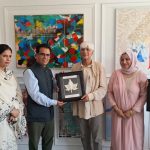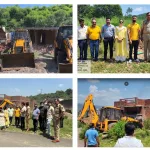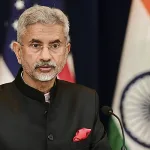Thirty-five years is a long time in the life of a people. It is enough time to build new homes, raise new generations, and adjust to unfamiliar cities and towns. But it is also enough time to let memories fade, identities blur, and promises grow stale. For the Kashmiri Pandit community, forced to flee the Valley in 1990 amid rising terrorism and fear, this long wait for return has become a story of hope, heartbreak, and harsh reality. Each passing year adds a fresh layer of dust on what was once a vibrant coexistence of cultures. The yearning for return has become not just a political demand, but an emotional plea rooted in the very idea of belonging.Since the exodus, the idea of return has been spoken of by every government in power. Prime Ministers and Chief Ministers, bureaucrats and party spokespersons have all echoed the same sentiment: that the Kashmiri Pandits must be brought back to their homeland with honour, security, and dignity. The words are eloquent, but the ground realities paint a different picture. Despite multiple policies and packages announced over the decades, there is little evidence of a comprehensive plan that ensures not just physical return, but emotional and cultural restoration.In Jagti township near Jammu, one of the largest resettlement colonies built for displaced Kashmiri Pandits, life continues in a state of half-settled existence. Rows of identical concrete buildings stretch out like memories trapped in cement. Thousands of families who once lived in the greener, quieter corners of the Valley now crowd into these uniform structures.Some have adjusted. Others, especially the elders, live with a lingering ache—a constant replay of what they left behind. Shanta Koul, a 68-year-old widow, looks out of her window as if expecting the mountains of the Valley to appear on the horizon. “Every year they say we will be taken back,” she says, her voice flat from repetition. “But no one tells us how or when. We are tired of being called migrants in our own country. We never wanted to leave. We had to.”
For the younger generation, the situation is more complex. Born and brought up in exile, many have never seen Kashmir. Yet the idea of Kashmir lives on in the stories they’ve heard—of snow-covered roofs, walnut trees, temple bells, and the cool air of Anantnag or Ganderbal. Rahul Pandita, a 25-year-old college student, sums it up with a strange kind of wisdom. “For me, it’s not a memory, it’s a longing inherited from my parents. We are in-between people—neither fully here nor there. My roots are in a soil I’ve never touched.”Across the mountains, in the Valley itself, the air is no less heavy with memory. In small towns and villages where Pandits once lived side by side with Muslims, the silence left behind by their sudden disappearance still lingers. Ghulam Nabi, a retired school teacher in Shopian, recalls how one day in the early 90s, the houses of his Pandit neighbours were simply locked up. “We studied together, played together. Then they were gone. No goodbye. No answers. And since then, things have only grown more bitter.” His words are soft, but carry the pain of a torn fabric—of a Kashmir that once stood for shared culture and tolerance.Among some segments of the Valley’s Muslim population, the idea of the Pandits’ return is welcomed, but cautiously. People express concern not about the return itself, but about the manner in which it is being talked about. There is resentment against being painted in black-and-white narratives—of being collectively blamed for a tragedy born out of a complex web of terrorism, politics, and fear. “They must come back,” says Bilal Ahmed, a university student in Srinagar. “But there must be trust. We are victims too. The politicians must not poison this process.”Over the years, the Indian government has announced multiple rehabilitation packages, with promises of jobs, secure housing, and assistance in resettling in the Valley. The 2008 Prime Minister’s package was followed by updates in 2015 and 2020, each time creating a buzz of hope. But on the ground, these promises have translated into very little.Transit accommodations in Kupwara, Budgam, and Baramulla remain half-built, ill-equipped, or poorly maintained. Many of the young Pandits who accepted government jobs under these schemes now live in high-security zones, behind barbed wires, guarded by guns, unable to integrate into society. After the targeted killings of minority community members in the last few years, their fears have grown. Hope has been replaced by hesitation.An official, speaking anonymously, admits that the problem lies not just in policy design but in political will. “There’s a lack of continuity. One government promises, the next one pauses. The bureaucratic machinery is slow. And we can’t ignore security threats. There is no easy solution.” His words ring true—return is not just about building homes. It is about rebuilding trust, something that cannot be ordered through government notifications.Perhaps the deepest wounds are not visible. The trauma of displacement has affected the mental and emotional wellbeing of an entire community. Generations have grown up with a sense of being uprooted, carrying grief they cannot fully articulate. Temples lie abandoned or vandalized, ancestral homes are either destroyed, encroached upon, or impossible to reclaim.
Their mother tongue, Kashmiri, once spoken with pride, is now fading in homes where Hindi or English dominates. Rituals have grown quiet. The culture is shrinking in exile. Mental health experts working in these displaced communities describe high levels of depression, anxiety, and identity loss. “They are still living in exile,” says Dr. Seema Zutshi, a psychologist in Jammu. “Even those who are financially stable feel emotionally orphaned. There is no closure. No healing.”Still, there are flickers of effort—initiatives to preserve heritage, write histories, document the traditions and memories of the community. Some young Pandits are making brief visits to the Valley, reconnecting with the land of their ancestors, photographing shrines, reviving temple rituals, meeting old neighbours. These are personal acts of resistance against forgetting. But they remain scattered, unsupported, and often symbolic. They do not yet add up to a movement.The question that looms over all of this is simple, yet painful: is return still possible? And if so, what kind of return is being imagined? For many displaced Pandits, going back does not mean living in walled townships or fortified enclaves, cut off from society. It means being part of the landscape again—buying vegetables from the local market, walking to a nearby temple, watching the chinar trees shed their golden leaves. It means breathing the air of home without fear.But such a return requires much more than policy. It requires preparation of hearts and minds, the building of bridges, the reweaving of social trust. It requires an acknowledgment of suffering on all sides, a willingness to forgive, and a collective desire to move beyond the wounds of the past. The politicians must stop using the issue as a tool for elections. The media must stop reducing it to a headline. And the society must find the courage to face itself in the mirror.For now, the return of the Kashmiri Pandits remains unfinished. It is a journey paused somewhere between memory and reality, caught in the crosswinds of bureaucracy, politics, and fear. But it is also a journey that must be completed, not just for the Pandits but for the soul of Kashmir itself.A Kashmir without its Pandits is incomplete. Their return is not just a logistical need—it is a moral imperative. Whether that return happens in full or remains a broken promise will define the future of the Valley. Not just in maps, but in the hearts of its people.
(Author is RK columnist and can be reached at: [email protected])








